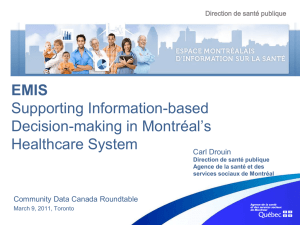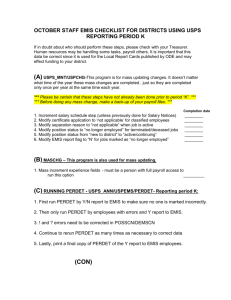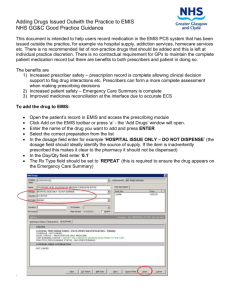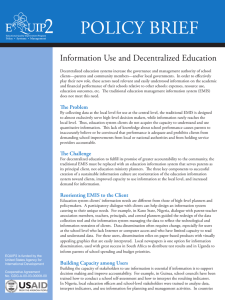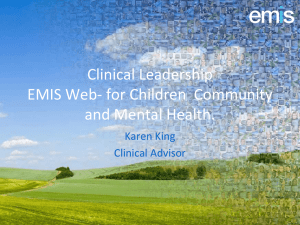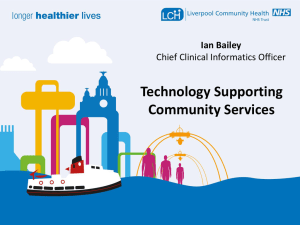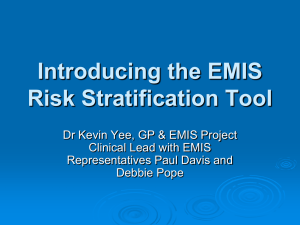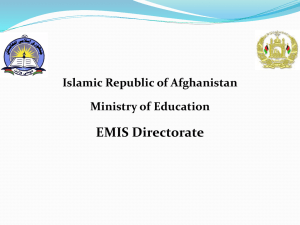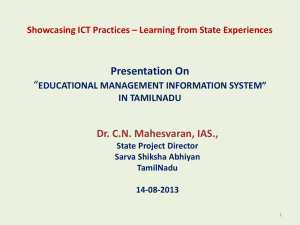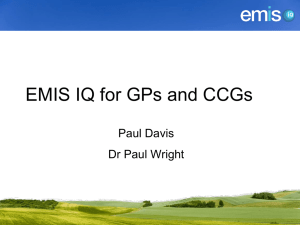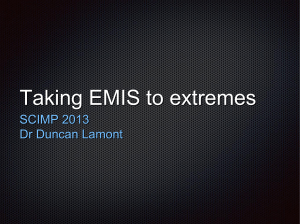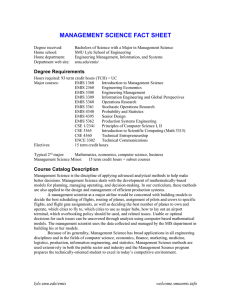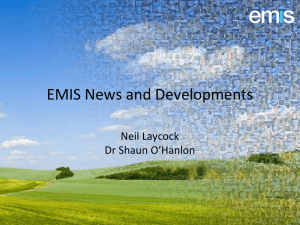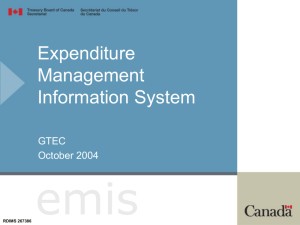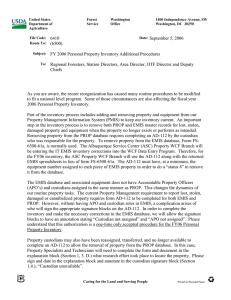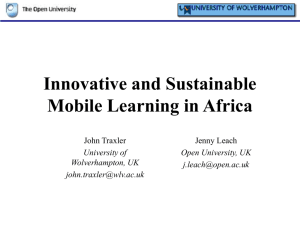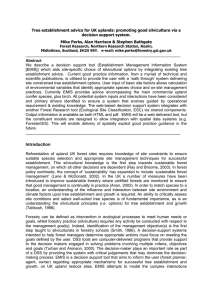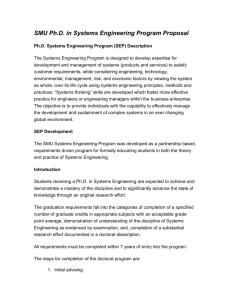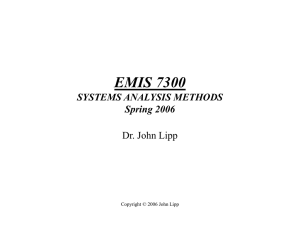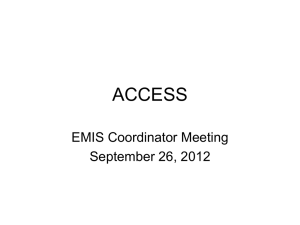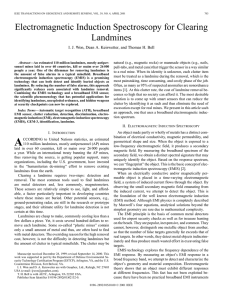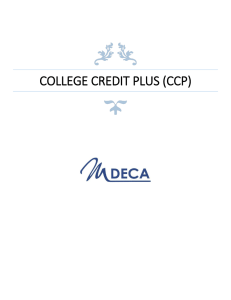Document
advertisement
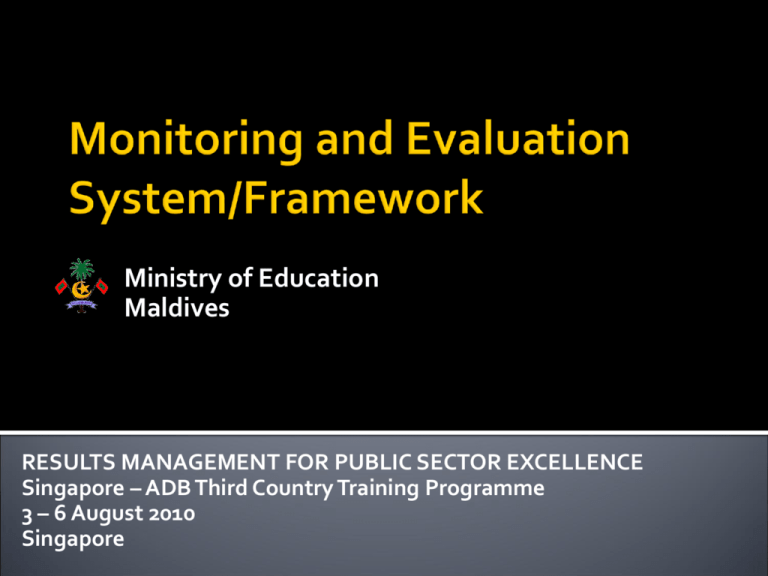
Ministry of Education Maldives RESULTS MANAGEMENT FOR PUBLIC SECTOR EXCELLENCE Singapore – ADB Third Country Training Programme 3 – 6 August 2010 Singapore • • • • • • Total 1190 islands 195 inhabited islands 20 atolls / 7 provinces Geographical area: 90,000 sq km Land area only 300 sq km Population: 300,000 (2006census) • 40% under 15 years • 98% Adult literacy rate • Universal Primary Education Higher Secondary Lower Secondary Primary Pre-primary Nsry LKG UKG 1 2 3 4 5 6 7 8 9 10 11 12 3 4 5 6 7 8 9 10 11 12 13 14 15 16 17 Instructions in English at all levels Cambridge O’Level/IGCSE & SSC Exam Edexcel A’Level & HSC Exam Organisational Overview Role of MoE in National Development Current M&E Systems with linkages to national development Plan Data collection systems, processes and analysis M&E reporting Challenges and Limitations Prospects of M&E systems A world class education system where universal access to the highest quality of education and training is provided among small states. To provide universal access to quality education from preschool to higher education, instill strong moral values in all children and nurture them to become healthy, skilled, capable citizen Education contributes to the economic stability of the nation by increasing the knowledge and skills of the people, leading to increases in income. Education promotes civil and international peace as well as cultural tolerance and understanding. Education empowers people to bring about informed and necessary changes in their lives Education benefit not only the person learning, but also the community in which they live. Hence a high priority is given to education in National development Since 2009 the principal planning document of the government had been the five year National Development Plans – the last of which was the 7th NDP (2006 – 2009). After the country’s first multi-party democratic election, a new government took over office on 11 November 2009. The principle policy directive of the new government is their Manifesto. Strategic Action Plan (2009 – 2013) based primarily on the manifesto pledges is the current government’s new National Development Plan. The SAP translates the manifesto pledges and key themes into a concrete, rights-based and results-based strategies with clear targets, mandates, and means of implementation and monitoring of progress. SAP is expected to (i) guide the development processes in the country, (ii) be an instrument of allocation of budgetary and fiscal responsibilities to various sectors and government ministries, and ( iii) serve as a mechanism of accountability to the citizens of the country towards achievements of promised development benefits, and enhanced access to goods and services. The outcomes of the Strategic Action Plan are reflected through sector plans that fall under the three key themes: Good Governance, Social Justice Economic development Education sector falls under the Social Justice theme. Education Sector Goals Ensure equitable access to quality education as basic human right, including children with special needs. Ensure equitable access to education in all regions. Improve quality of education for ensuring holistic development of the child. Improve efficiency and effectiveness of education system through decentralisation and private sector participation. Align the education system to the economic and social needs of the country. Ensure accessibility to higher and further education in all regions. 14 policies/Objectives 55 major interventions/strategies More than 240 key activities Identifies crosscutting themes human rights, gender equity, Social protection, Private Sector Participation, Decentralisation, transport and connectivity and the environmental sustainability Detailed Annual Action Plans by Departments and Sections Current M&E procedure Monthly & Quarterly Monitoring ▪ DNP & Policy office (President’s Office) monitors progress of SAP centrally ▪ sectors to report on Plan progress monthly, Reports produced quarterly (Projects & budget review) Annual Monitoring ▪ sectors to report on Plan progress in their annual reports, ▪ providing annual progress updates to the National Planning Council ▪ DNP will coordinate the monitoring of Plan progress by seeking annual reports from Ministries and agencies on implementation status and performance indicators achieved. Mid-term Review and final review Performance based budgeting Automated easy monitoring ▪ At input level ▪ Throgh expanded version of the Donor Assistance Database (DAD) that captures national inputs ▪ At the outcome level ▪ Maldive Info (localised version of DevInfo ▪ Isles – pronvincial monitoring system An instituitionalised M&E system does not yet exist However, Action plan implementation Monitoring and Project Monitoring is carried out on a regular basis Policy Planning Division is responsible for Plan preparation and M&E –responsible for reporting to central agencies Sections and departments provide monthly progress reports on action plan implementation Quarterly and end of year reviews Monitoring and Evaluation Goal / Objective (desired outsome) Target (SMART) (specific outcome) Indicator (Quantitative means of measuring target) Establish a library/resource room in 1:1 ratio for each school by the end of 2013 library per school P1: Ensure that clear targets are set for the levels Establish a computer lab in each 1:1 ratio for of knowledge, skills, school with atleast 1 computer for computer lab per discipline, well‐being and every 30 students by the end of 2013 school academic standards that student's should realize and provide the necessary Establish a science lab in the assistance in achieving secondary schools with the 1:1 ratio for these targets. necessary equipment by the end of science lab per 2013 school No. of schools Set up broadband internet in schools with enrolment with an enrolment of 100 students 100 students minimum minimum Baseline 2008 End of End of End of (current 1st year 3rd year 5th year situation) 100% Means of Verification (Source of information) EMIS EMIS 100% 80% EMIS EMIS 80% Project Monitoring forms Monthly status reports from all sections and departments Mid-year and end of year review – SMT Sector Annual Report Education Management Information System (EMIS) Currently only school related data are collected Educational Statistics – annual publication Project Monitoring forms Monthly status reports from all sections and departments Mid-year and end of year review – SMT Sector Annual Report Education Management Information System (EMIS) Currently only school related data are collected Educational Statistics – annual publication National Assessments GCE O level and A Level results analysis and decimination Staff Appraisal system No sound M&E system or institutional mechanism established Lack of technical knowledge and capacity in M&E system development and implementation Technical problems with the current EMIS A unified school management information System is in the process of development EMIS to be further upgraded and developed A centralised monitoring and evaluation system in the process of development MoE capacity in M&E to be developed A comprehensive M&E Plan and framework for the sector to be developed.
